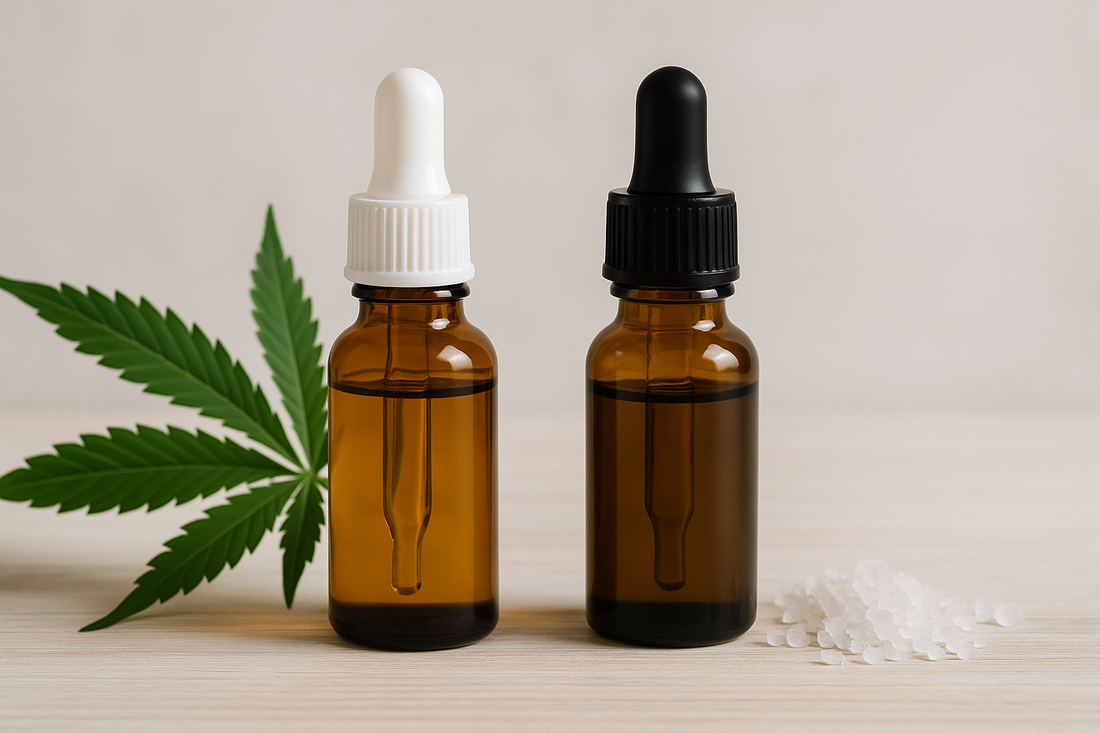
Synthetically vs. Naturally Derived Cannabinoids
Share
As demand for hemp-derived cannabinoids skyrockets, understanding their origins is more important than ever. While plants naturally produce phytocannabinoids, limitations in yield and legal restrictions on THC often push manufacturers toward alternative extraction methods—some more transparent than others.
Naturally Occurring Cannabinoids
Industrial hemp typically contains 2–4% total cannabinoids, primarily CBD (and legally ≤0.2% THC), with minor cannabinoids like CBG, CBC, and CBN present at <1%. These compounds form via the plant’s natural biochemical pathways. For instance, THC may degrade into CBN when exposed to heat and light over time—an organic transformation seen in aged plant matter.
Chemical Conversion & “Cooking”
Due to low yields and THC compliance hurdles, some manufacturers resort to chemically modifying extracts post-extraction:
· Heat + oxygen “cooking” techniques artificially convert cannabinoid profiles—e.g., heating THC to boost CBN content.
· This is not a purification process, but a chemical reaction that alters multiple molecules in the extract.
· Such methods should not be marketed as "hemp-derived" when the end molecules differ structurally from their natural state.
The Risks of Synthetic Cannabinoids
Manufacturers may also include completely synthetic cannabinoids—lab-made analogues structurally distinct from any plant-derived cannabinoids:
· These often act as full CB₁/CB₂ agonists, sometimes 100× more potent than THC, increasing toxicity and overdose risk.
· Synthetic cannabinoids, like Spice or K2, have been linked to severe side effects: psychosis, seizures, heart and kidney issues, and even fatalities.
· These compounds may include multiple enantiomers (mirror-image molecules) not present in nature—raising unknown safety and metabolic concerns.
Why Transparency Matters
|
Concern |
Naturally Derived |
Chemically Modified |
Fully Synthetic |
|
Source Accuracy |
✅ Hemp plant |
⚠️ Heat/chemical processed |
⚠️ Lab-made |
|
THC Compliance |
✅ Naturally ≤0.2% |
⚠️ Conversion masks THC |
⚠️ No plant origin |
|
Safety & Traceability |
✅ Clear supply chain |
❌ Unknown by-products |
❌ High potency, unknown risks |
|
Regulatory Status |
✅ Legal/regulated |
❌ Misleading labeling |
❌ Often illegal |
Consumer Takeaway
Consumers deserve clarity. If a product doesn’t explicitly state:
· Whether cannabinoids are phytocannabinoids or chemically modified
· And whether any synthetic analogues are included—
…then you’re not getting the full picture.
We believe in empowering you with safe, traceable, and naturally derived cannabinoids. Because when it comes to plant-based wellness, you should always know what’s inside.
